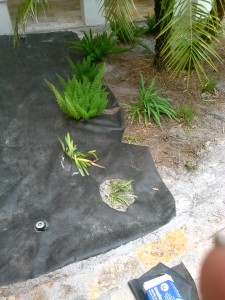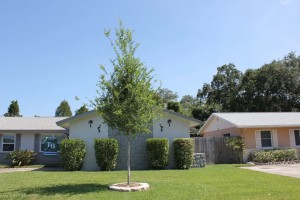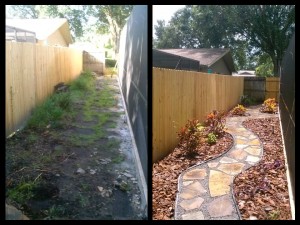
Weed block, also called landscape fabric, is a fabric designed to block weeds from growing in your landscape beds. It is installed as a layer of fabric between the soil and mulch or rock. But, does it really block out weeds? I have mixed thoughts about that.....
The quality of the fabric is important, and the thin, plastic fabric just breaks down too easily. Any break in the barrier allows for weeds to grow, and the thin, cheap stuff can break down enough over time that is actually pokes up through the mulch, in little pieces. The heavy duty nylon commercial grade does hold up better, but it is difficult to cut through to replace any plants. My preference to use in all of the available types is the medium grade that is similar to a felt material, as it doesn't rip as easily, and if you need to replace a plant, it is manageable to dig through.
That still doesn't answer the question, though, does it block out weeds? Yes, in the beginning it does. But, mulch is an organic material that breaks down over time to create compost. As well, if you have leaf drop from trees or bushes, they break down to compost as well, and compost makes a great medium for weed seeds to root. So, while the weed block may stop a lot of weeds from growing up from the underlying soil, it does not stop weeds that sow and grow in the mulch, or from runners that crawl from outside the bed (like St. Augustine sod, or other running weeds). So, while it does work initially, in the long run it does not.
So, why use weed block, then? You need it for rock. If you are going to use rock anywhere in your landscape, you need the landscape fabric to stop the rock from sinking into the ground. And, rock will sink over time. Weeds will grow in rock over time, too (just look at the weeds in a crack in the sidewalk!), but if you use a good quality weed block under your rock, you will have to top dress it or add to it less often over time.
For me, weed block is mostly ineffective as a weed control, but is useful when installing rock. If you are now feeling discouraged about having one less tool to help in the battle against weeds, don't be! I will post soon with some tips to help give you the advantage, and maybe, just maybe, win the war!


